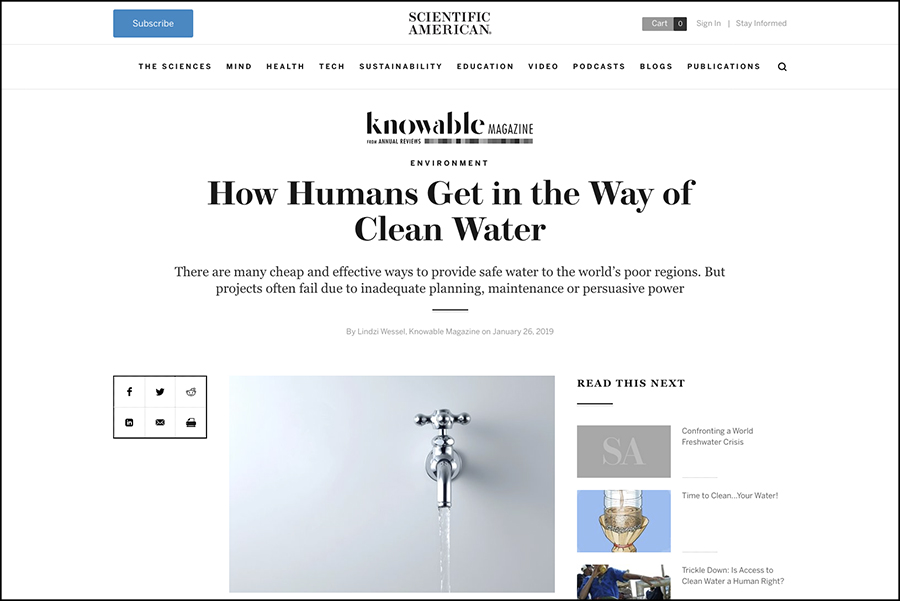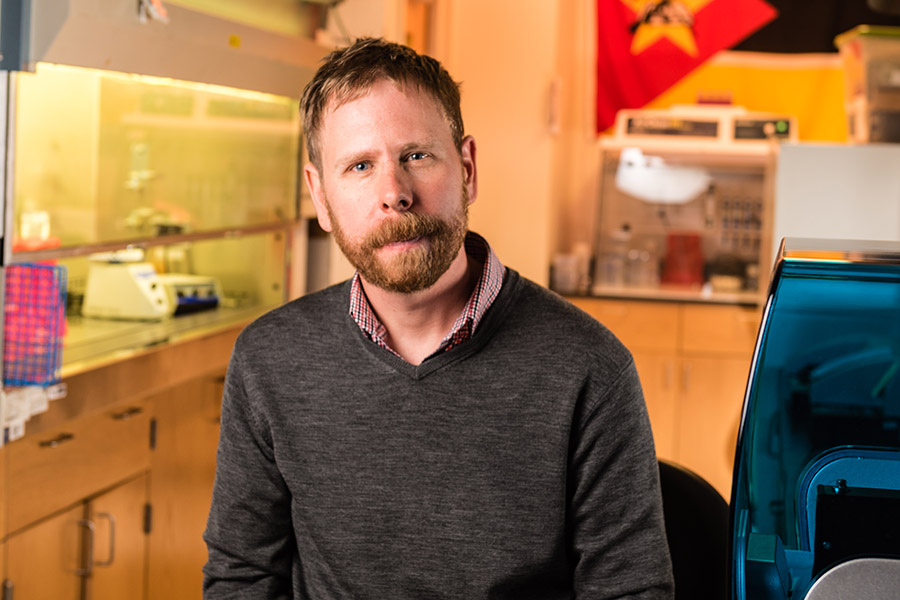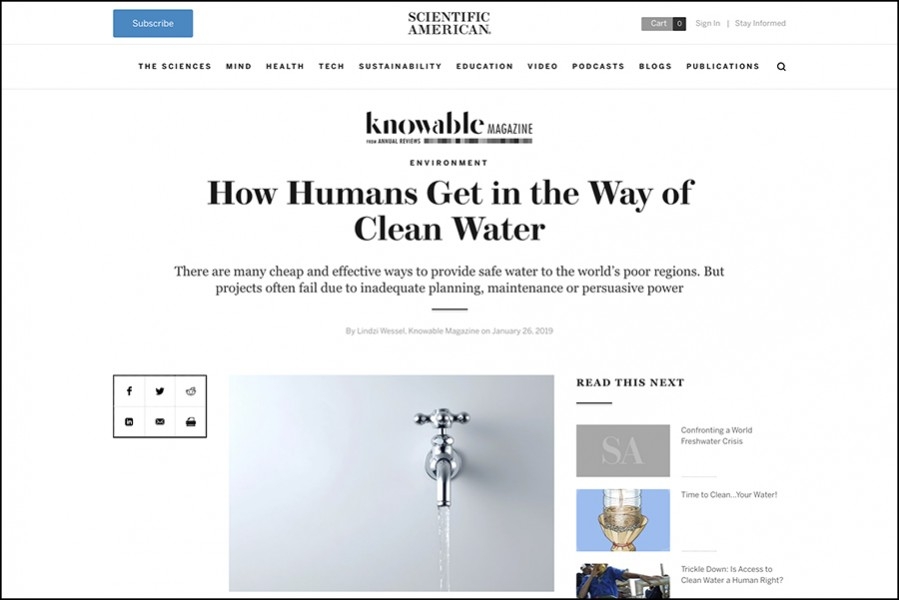 |
 Brown |
Scientific American and Knowable Magazine have highlighted a growing understanding among clean water researchers about the most difficult challenge they face.
It’s not technology or financial barriers. It’s people.
The School of Civil and Environmental Engineering’s Joe Brown has been one of the engineers trying to understand the issue. He told the publications that providing ways for individual households to treat their water at home had been “potentially this huge revolutionary new model.” Then a 2009 study upended everything.
From Knowable Magazine's Lindzi Wessel:
A newly published review argued that there was little solid evidence that household water treatment in poor rural regions was working: Placebo-controlled trials in Ghana, Gambia and Brazil found no effect on incidence of diarrhea. Brown recalls that he was giving a talk at the World Bank in Washington, DC, about the benefits of treating water at the household level when, even as he spoke, someone in the audience was circulating copies of the paper.
It was “really the first skeptical paper that had come out around household water treatment—specifically to say that this method for providing safe water is totally bonkers,” Brown says.
More criticism followed. People targeted for interventions didn’t seem to value treatments and weren’t willing to pay for them. They used treatment tools incorrectly or inconsistently, and usage dropped sharply over time. In a trial that taught members of poor communities in Dhaka, Bangladesh, about water safety and supplied 600 households with two free months’ worth of water-treatment products, the devices went largely unused. On site visits, when asked if they had treated their water in the last day, more than 70 percent said no. “Adoption among the global poor is very low,” wrote the study authors, “and little evidence exists on why.”
In the years since, Brown and others have been working to untangle that riddle.
“Most water that’s unsafe looks and smells perfectly fine,” said Brown, Carlton S. Wilder Assistant Professor. “The challenge is making this invisible problem visible.”
Read more from Scientific American and Knowable Magazine.

